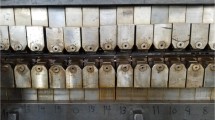Abstract
Continuous roll forming (CRF) is a novel forming process for three-dimensional surface parts, in which a pair of bendable forming rolls is used as sheet metal forming tool. By controlling the gap between the upper and lower forming rolls, sheet metal is non-uniformly extended in the longitudinal direction while it is bent in the transverse direction during the rolling process. As a result, longitudinal bending is gained and a doubly curved surface is formed. With the rotations of the forming rolls, the sheet metal is deformed consecutively, and a three-dimensional surface part is shaped continuously. In this paper, the mechanism of the three-dimensional surface formation in CRF is set forth. Through theoretical analysis of the CRF process, the governing equations for the bending deformation in rolling process are presented. Based on the simplification on the deformation and material model, the formulation to calculate the longitudinal bending deformation is derived, and the methods to design the compression ratio and the roll gap are given, the effects of compression ratio of rolling and the width of blank sheet on the longitudinal bending curvature are analyzed. The forming experiments on typical surface parts and measured results show that forming results with good precision can be obtained by CRF process.
Similar content being viewed by others
References
Yoon S J, Yang D Y. Development of a highly flexible incremental roll forming process for the manufacture of a doubly curved sheet meta. CIRP Annals — Manuf Technol, 2003, 52(1): 201–204
Yoon S J, Yang D Y. An incremental roll forming process for manufacturing doubly curved sheets from general quadrilateral sheet blanks with enhanced process feature. CIRP Annals — Manuf Technol, 2005, 54(1): 221–224
Shim D S, Yang D Y, Kim K H, et al. Numerical and experimental investigation into cold incremental rolling of doubly curved plates for process design of a new LARS (line array roll set) rolling process. CIRP Annals — Manuf Technol, 2009, 58(1): 239–242
Shim D S, Yang D Y, Kim K H, et al. Investigation into forming sequences for the incremental forming of doubly curved plates using the line array roll set (LARS) process. Int J Mach Tools Manuf, 2010, 50: 214–218
Li M Z, Hu Z Q, Cai Z Y. Method of multipoint continuous forming for the freeform surface parts (in Chinese). J Mech Eng, 2007, 43(12): 155–159
Cai Z Y, Li M Z, Hu Z Q. Theoretical analysis and springback control of continuous flexible forming technology for three-dimensional surface parts (in Chinese). Chin High Technol Lett, 2011, 21(6): 607–611
Cai Z Y, Li M Z, Lan Y W. Three-dimensional sheet metal continuous forming process based on flexible roll bending: Principle and experiments. J Mater Proc Technol, 2012, 212(1): 120–127
Zeng J, Liu Z H, Champliaud H. FEM dynamic simulation and analysis of the roll-bending process for forming a conical tube. J Mater Proc Technol, 2008, 198(1–3): 330–343
Lin Y H, Hua M. Influence of strain hardening on continuous plate roll-bending process. Int J Non-Lin Mech, 2000, 35(5): 883–896
He F B, Shen Y P. Theory of Plate and Shells (in Chinese). Xi’an: Xi’an Jiaotong University Press, 1989
Author information
Authors and Affiliations
Corresponding author
Rights and permissions
About this article
Cite this article
Cai, Z., Li, M. Principle and theoretical analysis of continuous roll forming for three-dimensional surface parts. Sci. China Technol. Sci. 56, 351–358 (2013). https://doi.org/10.1007/s11431-012-5081-5
Received:
Accepted:
Published:
Issue Date:
DOI: https://doi.org/10.1007/s11431-012-5081-5



